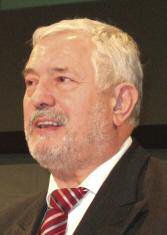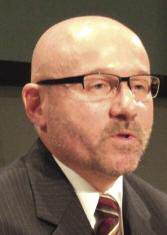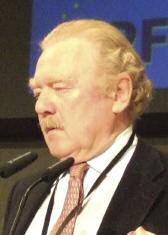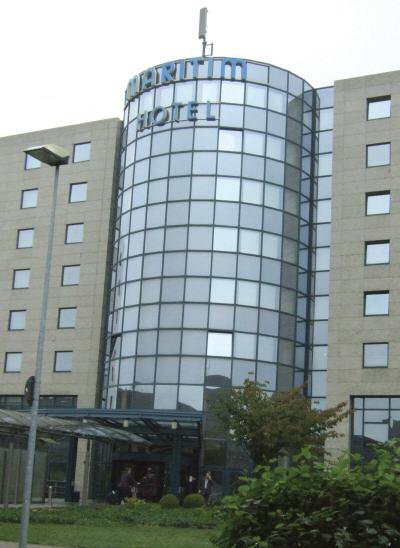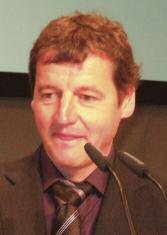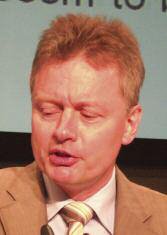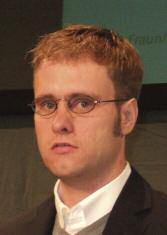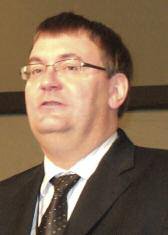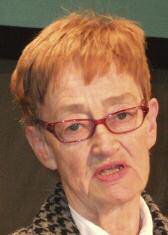Full programme for a full house
6 December 2010
Organised jointly by the European Panel Federation (EPF) and the German research institute, Fraunhofer WKI, this symposium?’s large attendance was a credit to both organisations, especially given the tough economic climate.
Particularly pleasing was the support given by the panel manufacturers and national panel associations, who sent a total of over 80 delegates from around the world; Europe west and east, South America, Japan, China and Iran were all represented.
Twenty-eight presentations were given over two days at the Maritim Hotel, Hannover airport.
Kris Wijnendaele, secretary general of the EPF, opened the meeting and welcomed the delegates (simultaneous translation in four languages was provided) and he was followed by the federation’s president, Ladislaus (Laszlo) Döry.
Mr Döry spoke on the current situation of the European industry, summarising the status of particleboard, MDF and OSB production and consumption in Europe.
The meeting’s opening coincided with the rescue of the Chilean miners and he remarked that that rescue team didn’t promise too much and delivered more, suggesting this was a lesson for the EU concerning wood supply as it had promised more than it coulddeliver! He was referring to the major issue of wood being subsidised for burning for ‘biomass’ energy production – the main theme of his presentation.
“Biomass is and will remain wood. Wood is the reality hidden in the word ‘biomass’,said Mr Döry, forecasting a shortage of 240 million m3 of wood by 2030 if all NREAP (National Renewable Energy Action Plans) are realised. “We will be in trouble very shortly,he warned.
“The EPF calls on the EU and all member states to: use wood before burning it; respect the value and employment chains of wood; mobilise more wood, bringing more ‘unknown forest owners’ to the market; foster more recycling of wood; develop a renewable materials and products policy; promote the use of more wood based products as they are eco-efficient and mitigate climate change.”
Mr Döry concluded: “The EU and EC must understand that increasing the use of wood in products would sequester the most carbon. You can only burn wood once!”
Claus Seemann of panel maker Pfleiderer spoke on Classification of sustainable construction and the resulting demands for the wood based panel industry. He was referring mainly to the German standards and codes for sustainable construction.
“Optimisation of costs is the focus with consideration of the complete life cycle of the building,said Mr Seemann. He pointed out that there are a number of national certification systems around the world – BREEAM in the UK, LEED in the US and DGNB in Germany, but that they all work to much the same principles.
For forest certification, Germany mainly uses PEFC (Programme for the Endorsement of Forest Certification Schemes).
“The problem is such certification costs a lot of money and work for forest owners which is not required if they sell their wood for biomass,pointed out Mr Seemann.
Professor Andreas Michanickl of the Rosenheim Institute spoke about The wood based panel industry – new perspectives with improved technologies?
He said the main challenges for the future were energy, raw materials, logistics, and markets and products.
“The aim is increasing profitability with decreasing costs and improved competitiveness,said the speaker, who went on to outline: technological improvements in MDF refining to reduce energy consumption; improved recycled wood preparation for particleboard; release agents with 100% MDI bonding in OSB; and new combustion technologies for drying. He also endorsed the new wood fibre insulation materials and lightweight boards.
“We must focus more and more on reducing energy costs and the use of fossil fuels,he urged delegates.
Andreas Klug of Siempelkamp opened the second session with his presentation: Energy concepts for the WBP industry – economic and energetic aspects.
He said that energy generation from renewables is currently 16% in Germany and should be 35% by 2020.
Mr Klug suggested that the panel industry had an opportunity in the combined generation of heat and electrical power (CHP), using wood as fuel, and that it could generate “eco-electricitywith a higher efficiency than a conventional biomass CHP station.
Martin Steinwender of panel maker Egger assessed the impact of the IPPC (Integrated Pollution Prevention and Control) Directive on the panel industry.
The EC aims to produce a clear guideline for authorities by defining BAT (Best Available Techniques), a permitting procedure, emission monitoring and a transition period for existing installations, he said, adding that wood preparation, combustion, the press, dryer and logyard are all relevant to IPPC. This would lead to a BREF (BAT Reference Document), which would be binding on the industry. The ‘Sevilla Process’ to develop such a BREF will start in 2011.
Didier Goesaert of Schenkmann-Piel- Engineering (part of Dieffenbacher Group) co-presented with Simon Staufer of Swiss Combi on the ecoDry System for closed loop drying technology.
They concluded that ecoDry offered an alternative to WESP (wet electrostatic precipitator) and RTO (regenerative thermal oxidiser) for OSB and wood particle dryers with the same exhaust gas quality, using super-heated steam. They claimed no contact of combustion gas with the wood meant no ash in the product and improved colour, surface and quality of the flakes or particles, while only a smaller dry ESP (electrostatic precipitator) was required for fly ash separation.
Session 3 was opened by Kenth Ecklund of Sunds MDF Technologies (also a Dieffenbacher Group company), who presented experiences of the EVOjet dry resin blending system, first presented at this symposium two years ago, and claimed better-than-expected results from five running installations.
Matthias Fuchs of Electronic Wood Systems (EWS) then presented New ways of blow detection technology to improve online evaluation of panel characteristics.
He claimed increased validity of sound picture; additional measurement information; no moveable support frame required; and a simplified setting of sound-picture levels. This improvement employed reflection compensation, empty gap measurement and automatic level adjustment, said Mr Fuchs.
New systems available are Ultra-scan for very thick, low density panels; Conti-sound for particleboard, MDF and OSB up to 40mm; Blow-scan without reflection measurement; and Ply-scan for plywood requirements, concluded Mr Fuchs.
Andreas Kondring of B Maier presented Energy efficient flake preparation technologies. He pointed out that the drum chipper is the biggest consumer of energy in the flake preparation line and that his company had limited peak start-up load with a “soft starterand employed a high drum weight for high rotational energy.
He also said that hydrothermal treatment of OSB chips had reduced energy consumption by 33-50% in Maier’s tests.
Ending this session, Kai Greten of GreCon said he would “lead the audience into the world of X-rays”, giving a history of the use of these rays, culminating in the Dieffensor for detecting foreign bodies and glue lumps in the mat before it enters the press.
He said Dieffensor is also used to measure the density variation in the mat and can inspect panels at up to 150mm/sec, saving significant amounts of raw material.
Session 4 began with a presentation by Detlef Krug of research institute ihd Dresden about The potential for the application of IVHF technology in MDF manufacture.
‘Integrated pre-pressing and high frequency pre-heating’ is the meaning of IVHF in English translation.
“You get faster plastification of the mat, leading to greatly reduced spring-back after the press,said the speaker. “Press time factors of 5 to 2.5 sec/mm are not achievable without IVHF technology and this was achieved irrespective of the resin used.”
Mr Krug claimed the following benefits for the technology: Manufacture of MDF with good properties; reduction in press-time factor in MDF by at least 50%; reducing resin content by at least 50%; and production of an application-oriented density profile.
Rounding off the technical sessions for the first day, Birgit Östman of SP Trätek, Sweden, gave a status report on fire protection of wood based panels. She had carried out various tests on the fire resistance of panels and concluded to a delighted audience: “Youcan be very proud of the fire performance of wood based panels”.
After an excellent evening reception hosted by Sasol Wax, delegates returned to the conference room on the second day to hear a presentation on behalf of that company.
Marc Prüsmann of Sasol Wax talked about Small wax particles – the key to efficient hyrophobising.
“Wax based sizing agents confer water repellence, retard thickness swelling and water absorption, provide the wood furnish with slip characteristics and reduce obstruction and maintenance in forming stations, blow pipes, blenders, combs and conveyor belts,said the speaker.
He went on to explain the advantages of wax emulsions over sprayed molten wax and concluded that advanced extra-fine emulsions improve the efficiency of wax application. He suggested that they would become the industry standard.
Next, Volker Thole of Fraunhofer WKI presented his ongoing work on Production of MDF/HDF without adhesives. He concluded that there was a big variability of parameters in his work, and a low repeatability, so more research was required.
Andreas Zillessen of Fraunhofer WKI took as his subject Green adhesives – a critical review.
He explained that ‘green’ adhesives were bio-based, low formaldehyde/VOC, had energy saving production and application, were recyclable and biodegradable. They include soya proteins, tannins, lignins, starch, cellulose, natural resins and extractives and natural oils.
However, he concluded that biobased adhesives were not necessarily ‘green’ as other important criteria are: VOC emission, energy balance and ecological balance/life cycle analysis. He added that resources which are necessary for food production should not be used to produce chemical products.
Next, Maike Balbo-Block of Evonik Gorapur presented Novel types of release agents for pMDI-bound panels.
Ms Balbo-Block said Gorapur’s release agents offer easy, safe handling, they are VOC-free, pure water based materials and anti-corrosive.
Session 2, day 2 and Marco Mäbert of ihd Dresden examined Optimisation of the pulp process regarding energy efficiency and fibre pulp quality.
In ihd’s laboratory refining system he used gamma ray computed tomography to measure fibre density distribution in the milling gap of a refiner. The system cleverly rotates around the refiner taking images.
His work analysed the fibre distribution according to the different zones on the milling disc and this ongoing work is expected to lead to optimisation of refiner construction.
Next, Michael Ketzer of Johns Mansville Sales reported on Functional DPL properties on HDF and particleboard using StabilStrand nonwoven.
This is a glassfibre layer which is positioned above or below the wood fibre mat or panel. For direct pressure laminate it can be positioned on the board surface under the decor paper layer, for instance on laminate flooring. It then imparts improved anti-static and fire retardant properties, and impact properties, said the speaker. It is also suitable for direct or digital printing.
Jean-Marie Gaillard and Marie-Lise Roux from France presented their findings in using low-formaldehyde-emitting particleboards in furniture production in France and found such boards can be used but that care should be taken with regard to moduli of rupture and elasticity.
“To have the best solution for consumers, board and furniture manufacturers must work together,concluded Ms Roux.
Riccardo Ferrari rounded off the session with a presentation on Innovative technology for a knife ring flaker. He represented Italian size-reduction machinery maker Globus.
Mr Ferrari described Globus’ patented wobble spreader. This eccentrically-operating and inclined disc spreads the chips evenly over the knife length, leading to a 20-30% higher flaking capacity and correctly cut flakes, he said. It also offers even knife wear, leading to lower costs for knives and shoes, as well as saving electrical energy.
The final session was kicked off by Harald Schwabb of Fraunhofer WKI on Conformity systems for formaldehyde emission of wood based panels – a new working item of international standardisation.
“The aim of this standard is to provide a system of conformity which is based on several options,said the speaker. “These options are combinations of several types of factory production control systems with several types of inspections by an inspection body. The idea of this standard is to give a statement about the suitability of the control system of a production line to declare that the products going into the market fulfil the requirements of formaldehyde emission or content with a sufficient accuracy.”
Georges Francis of Advachem gave an overview of formaldehyde catchers and concluded that ammonium hydrogenophosphate was the best, with good compromise on cost, mechanical properties and perforator value, while glycine was the most expensive, and urea the least expensive, catcher.
Konrad Roschmann of BASF offered a Novel concept for particleboards with low formaldehyde emissions.
He offered an alternative binder with scavenger for surface layers, with UF resin in the core, which he claimed offered formaldehyde levels at almost those of natural wood.
Eleftheria Athanassiadou and Charles Markessini of resin specialist Chimar Hellas, Greece, jointly presented Producing panels with formaldehyde emissions at wood levels.
They concluded that: “It is possible to meet the new demands for very low formaldehyde emissions from composite panel products with the use of properly formulated aminoplastic resin systems, without any deterioration in panel performance or significant modification of plant operating conditions, or the need to employ other types of binders to achieve emission values at the level of natural wood”.
The final speaker for the seventh edition of this symposium was Jan Gunschera of Fraunhofer WKI. He spoke about Modified zeolites for the reduction of formaldehyde emissions from panels.
Zeolites are alumosilicates which have a hollow ‘cellular’ structure with an enormous inner surface area. They can be natural or synthetic and can adsorb formaldehyde and act as ion exchangers and catalysts.
The researchers found that special modification of zeolite powders reduces formaldehyde emissions from particleboards significantly.
“We should say that this is ‘achievable in principle’,added Mr Gunschera and suggested that it may just be possible to actually reduce emissions in a room by using a board containing zeolites.
Dr Marutzky brought the conference to a conclusion by thanking the participants and he must have felt some personal satisfaction that this conference – the last in which he will be totally involved in the preparation – had attracted such a wide variety of speakers and delegates.
Professor Marutzky Honoured
The symposium gave an opportunity to mark the retirement of Professor Marutzky from the Fraunhofer WKI.
Professor Dr Rainer Marutzky joined the WKI’s chemistry department at the Fraunhofer Institute for Wood Research, Wilhelm Klauditz Institut (WKI), in 1976, after gaining his doctorate at the Technical University of Braunschweig.
In May 1989, he became acting director of the WKI and in 1992 was appointed director.
Professor Marutzky’s fields of research included environmental questions in the wood industry, the recycling of waste wood and the emission of formaldehyde and VOCs from wood products, as well as the chemistry of wood based panels and adhesives.
At the 7th European Wood Based Panels Symposium, Professor Dr Ulrich Buller of the Fraunhofer Institut thanked Dr Marutzky for his long service and presented him with the Fraunhofer medal.
Professor Dr Peter Glos (Munich Technical University) also thanked Dr Marutzky for his contributions and pointed out that he had founded the symposium jointly with the EPF in 1996. He also congratulated Dr Marutzky on his work with formaldehyde issues in wood based panels.
Dr Marutzky said he had enjoyed his time at the Fraunhofer Institute and said: “I have spent 35 years working with wood based panels and wood is something that can be turned into products and the wood based panel industry is not appreciated enough – it provides jobs, with good and important materials.”
Professor Dr Bohumil Kasal officially took over as director of the WKI on October 1st, although Professor Dr Tunga Salthammer was interim director from Dr Marutzky’s official retirement date of December 31, 2009 until that time.
